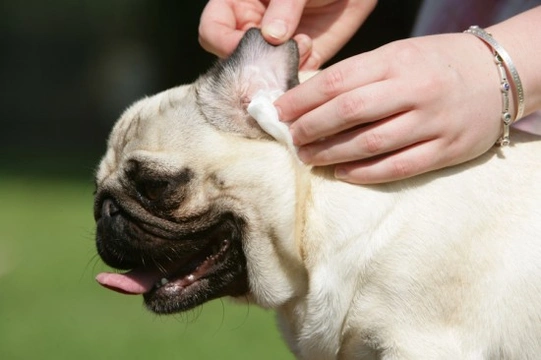
Essential ear cleaning - a dog owners guide
If you are familiar with dogs, you will know that ears come in all shapes and sizes depending on the breed of the dog. But whether you have a Spaniel with long, lobular, pendent ears, a terrier type with small prick ears, they are one of the most prolific areas on your dogs' body for breeding areas of all sorts of nasties......
Yeast infections, mites, fleas, cuts/injury and bacterial infections are just some of the problems encountered in this area and as the owner; it's up to you to help your dog take care of this delicate and sensitive area.
In the first instance, you will need to keep your dog's ears free of moisture, detritus/dirt and a build up of wax. Environments like this are the nicest, safest place for a whole host of parasites to take shelter, helping them annoy and possibly distress your dog and likely disgust you! However, not all ears were created equal! This means that different ears will need a different schedule of cleaning. Therefore, some breeds only need their ears cleaned every couple of weeks, whereas others will need daily attention. With this in mind, a good rule of thumb is that dogs with larger ears, especially if they drop down in graceful and long pendants, will need more frequent attention that dogs with smaller or prick ears. This is largely down to the fact that more dirt, moisture and bacteria simply have more of an opportunity to become trapped under the flap. Also, dogs with excessively hairy ears may also experience the same problems and a decent trim may be the key to helping you keep control of the situation.
Moisture control is probably one of the key elements to making sure you dog has healthy ears. This can be problematic, especially in dogs such as Spaniels who like swimming and have hairy, long and pendant ears to boot! Stopping water getting into the ear canal can be near impossible while they are swimming, but in the bath/shower at home, you can try placing large balls of cotton wool in the ears to minimise this (although your dog may not like it!). If water does go into the ears, then make sure that at the end of the activity, you have a dry, clean and lint free cloth or covered cotton pads on hand which you can use to gently dry them out as much as you can, taking care not to invade the sensitive opening to the inner ear itself.
Gentle handling is essential when it comes to ears - they are a delicate part of the body which can get easily damaged if you are too rough and do not pay attention when you are handling them. In addition, never use any equipment such as a baby cotton bud or other small objects which could easily get lodged in the ear canal. Your vet is an invaluable source of advice with regards to the correct ear care for your dog and may provide you with specialist cleaning fluids to help you do this at home. If you suspect injury, damage or infection (for example visible cuts, a build up of black or unusual material or foul smells from the ear), or the ears appear to be causing your dog distress (such as excessive scratching or pawing at them), then seek your vets advice. However, with a solid and regular routine of ear care, this should be minimised.



